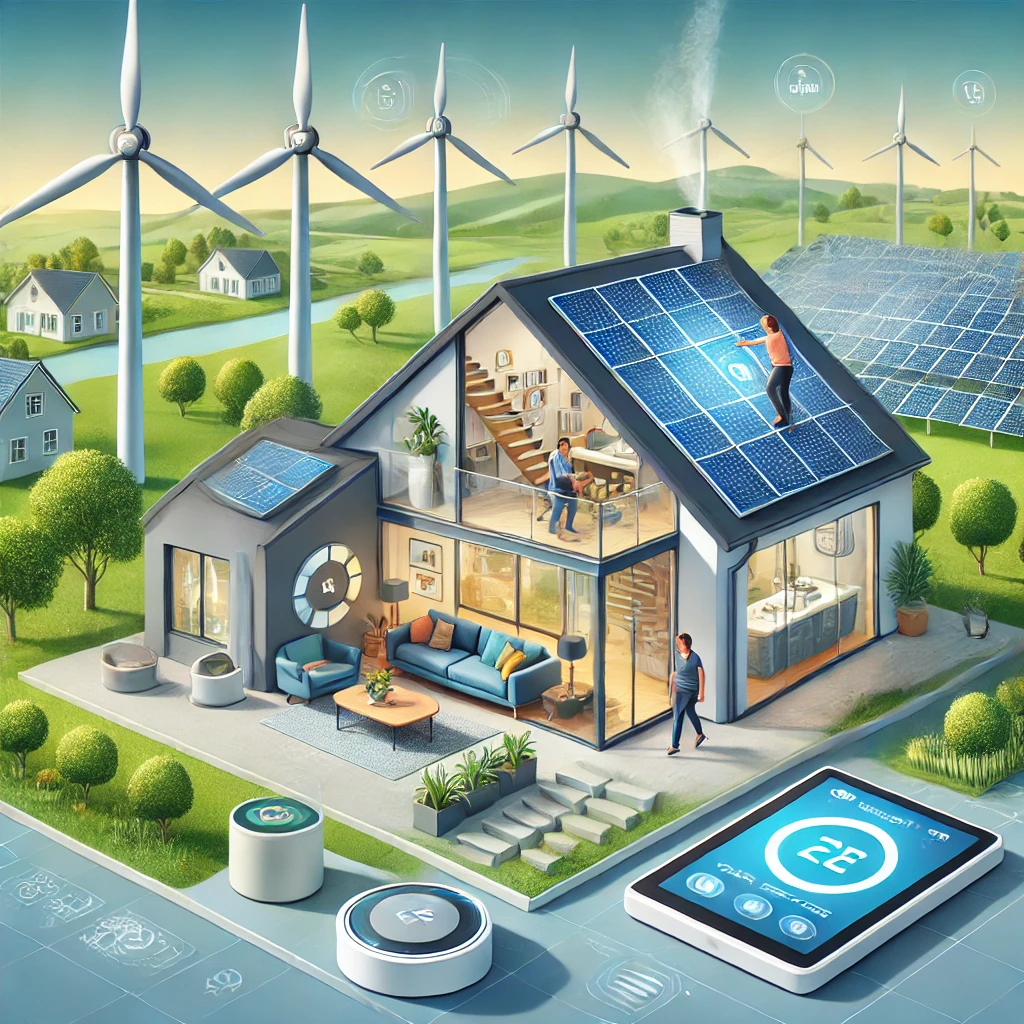Imagine a world where your home knows exactly when to turn off the lights, your office optimizes energy use effortlessly, and your carbon footprint shrinks—all without you lifting a finger. Sounds futuristic? It’s not. With the rise of smart energy solutions and effective energy management, this vision is becoming a reality.
In this article, we’ll dive into how energy management can help reduce your carbon footprint, explore the role of smart energy solutions, and offer actionable steps to help you make an impact. Whether you’re a homeowner, a business owner, or someone looking to live sustainably, you’ll find value here. Let’s dive in.
What Is Energy Management?
Energy management is the process of monitoring, controlling, and conserving energy in buildings, organizations, or households. Think of it as a fitness tracker for your energy use—it shows you where energy is being consumed and highlights where you can cut back.
But energy management isn’t just about saving money (though that’s a nice bonus). It’s also about reducing greenhouse gas emissions, which are a significant driver of climate change. For instance, a study by the U.S. Department of Energy revealed that buildings equipped with energy management systems saw an average energy savings of 25% annually.
Why Reducing Your Carbon Footprint Matters
Your carbon footprint represents the total greenhouse gases—primarily carbon dioxide—emitted due to your daily activities. Here’s why reducing it is essential:
- Mitigating Climate Change: Greenhouse gases trap heat in the atmosphere, accelerating global warming.
- Preserving Resources: Reducing energy use conserves finite resources like coal, oil, and gas.
- Improving Health: Lower emissions result in cleaner air, reducing respiratory and cardiovascular issues.
By adopting energy management strategies, you can directly contribute to combating these challenges while saving on energy costs.
How Smart Energy Solutions Can Help
Smart energy solutions utilize technology, data, and automation to optimize energy use. Here are some innovative examples:
1. Smart Thermostats
Smart thermostats like Nest or Ecobee learn your schedule and adjust heating or cooling to save energy. A U.S. Environmental Protection Agency study found that these devices can reduce energy bills by up to 10–12% annually.
2. Energy Monitoring Systems
These systems provide real-time data on energy usage, helping users identify patterns and opportunities for efficiency. For example, Sense Energy Monitor users often report a 15% reduction in monthly energy bills after implementation.
3. Renewable Energy Integration
Solar panels and wind turbines can be integrated into smart systems to decrease reliance on fossil fuels. For instance, a family in Arizona saved $1,500 annually by combining solar panels with a battery storage system.
4. Smart Grids
Smart grids use digital technology to balance supply and demand, improving reliability and efficiency. California’s adoption of smart grids has helped stabilize power during heatwaves, avoiding blackouts.
By adopting these solutions, you can lower energy bills while contributing to a greener future.
Practical Steps to Implement Energy Management
Ready to take action? Here are some steps to get started:
- Conduct an Energy Audit: Check your current energy use. Many utility companies offer free audits that highlight inefficiencies.
- Upgrade to Energy-Efficient Appliances: Look for ENERGY STAR-rated appliances that consume significantly less power.
- Install Smart Devices: Invest in smart thermostats, lighting systems, and energy monitoring devices for automation.
- Switch to Renewable Energy: Explore installing solar panels or choosing a green energy provider in your area.
- Involve Others: Share your knowledge and success stories with family, friends, or colleagues to encourage collective action.
Common Challenges and Misconceptions
While energy management offers clear benefits, there are common hurdles:
- Upfront Costs: While the initial investment can seem high, the long-term savings and environmental impact outweigh these costs.
- Complexity: Many assume that smart devices are complicated to use, but most are user-friendly and designed for seamless integration.
- “I’m Just One Person” Mindset: Individual actions matter. A report from the International Energy Agency emphasizes that collective small actions contribute significantly to global goals.
Conclusion
Energy management and smart energy solutions aren’t just buzzwords—they’re your tools to reduce your carbon footprint and build a sustainable future. By understanding your energy consumption, adopting smart technologies, and taking small steps, you can save money and make a tangible difference for the planet.
So, what’s your first step going to be? Will you install a smart thermostat, switch to renewable energy, or simply start monitoring your energy use? Whatever you choose, remember that every action counts. Share your thoughts or experiences in the comments below, and let’s inspire each other to make a difference!

